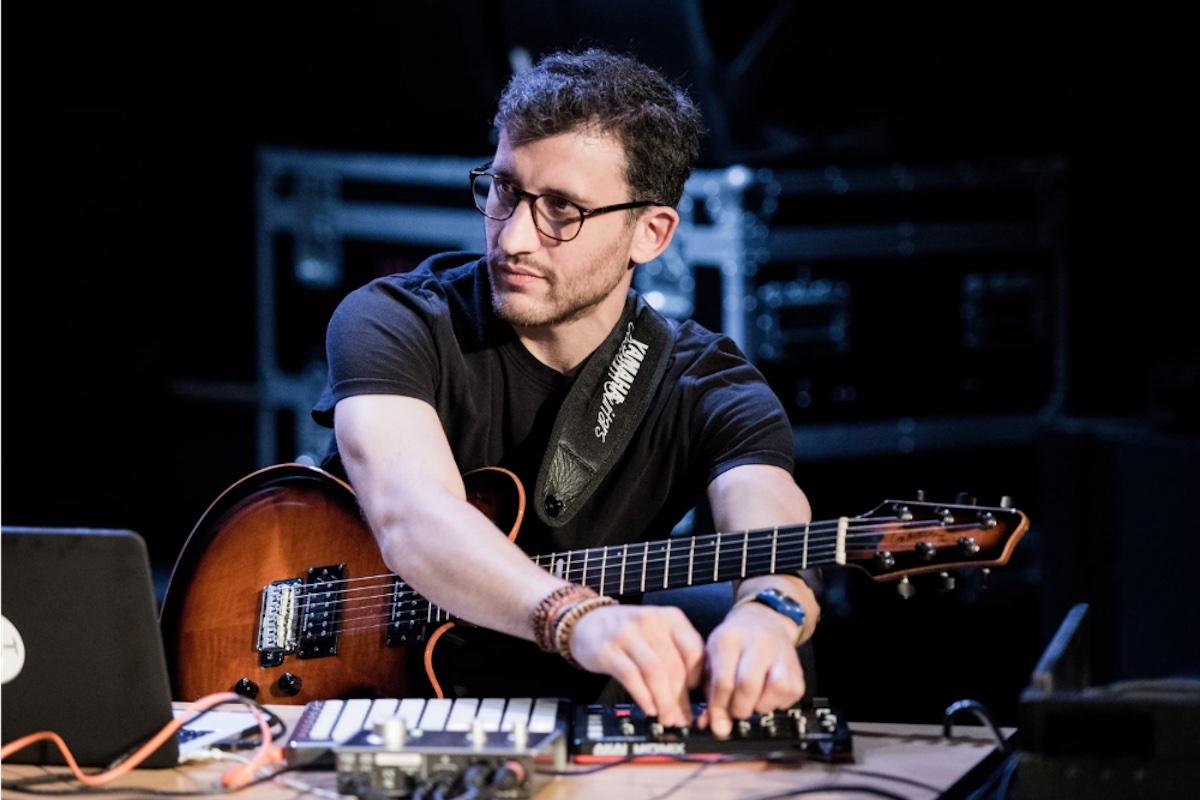UC Santa Barbara Grad Student Diego Ratto Wins International Acousmatic Music Competition
Inspired by the Rhythms and Sounds of Stockholm

This article originally appeared in UCSB’s ‘The Current.’
It’s early morning in Stockholm, Sweden. The train doors open, and the shuffle of bodies, materials and machines begins. And for composer Diego Ratto, it’s a symphony.
His recent electroacoustic composition “KOM” — featuring sounds recorded from everyday life in Scandinavia — was awarded the 2022 Prix Russolo, a prestigious international musical award for electroacoustic composition. Ratto, currently a doctoral student in music composition at UC Santa Barbara, is originally from Italy and lived in Stockholm in 2017–2020 while studying at the Royal Academy of Music (KMH).
“’KOM’ is the Swedish word for ‘to come’ — it is used in the past and in the imperative forms and it can also mean, ‘come here,’ as in to summon,” Ratto said. “It’s my point of view as a foreigner moving to a new city and encountering new things such as commuting, taking the train, public transportation — the rhythm of the city — I tried to translate what I felt.”
Established in France in 1979, the Russolo prize is named after Italian composer and artist Luigi Russolo and is specifically for electroacoustic music. Nearly 200 composers submitted works to the contest last year. Seven finalists, including Ratto, had their compositions performed at concerts around the world.
At each of the 10 concerts, the audience voted for their favorite composition. Following concerts in Dublin, Faverges, Leicester, Osaka, Geneva, Milan, São Paulo, Kobe, Prague and Annecy, Ratto was named the winner.
“Diego has been a top-notch student in the music department,” said João Pedro Oliveira, Corwin Chair of Composition. “His knowledge of electronic music and sound processing is amazing, so I am not surprised that he received this very important award.”
Ratto’s roughly 8-minute composition is a contrast between rhythms and rests. Sound elements from nature reoccur, creating restful and rhythmic sections amidst other the more aggressive urban sounds. Ratto said he wanted the piece to describe a typical day for him during this time: “Wake up, train, rhythm, forest, sea, and then the train again on the way home. It’s a depiction of a circle, of living in this particular moment.”
“KOM” is made up of concrete sounds that Ratto collected while he was in Stockholm — a lot of urban sounds, subways, traffic lights, feet marching and so on. He then modifies the sounds using software until it is no longer clear what the source of the sound is. Ratto also uses a technique called “electroacoustic orchestration” in which he applies the rules and techniques of a traditional orchestra to a digital medium.
“Let’s say you see an orchestral score in a vertical sense. It has instrument sections: woodwind, brass, string and percussion,” said Ratto, who also has a degree in jazz guitar from the Music Conservatory “A.Vivaldi” in Alessandria, Italy. “This way of organizing a traditional score is the same approach I’m using to compose. First, sounds are grouped in a vertical way, and the idea is to have several layers of simple sounds to create, every time, a new and more complex timbre. Horizontal organization, on the other hand, refers to the sequence of sounds in time — one after another, in a timeline.”
But instead of using instruments, for electroacoustic composition, Ratto uses sounds.When he’s not working on his electroacoustic compositions though, Ratto is a composer for instruments and film scores, as well as a guitarist and visual music creator. A wide variety of his musical compositions and videos can be found at diegoratto.com.
Support the Santa Barbara Independent through a long-term or a single contribution.



